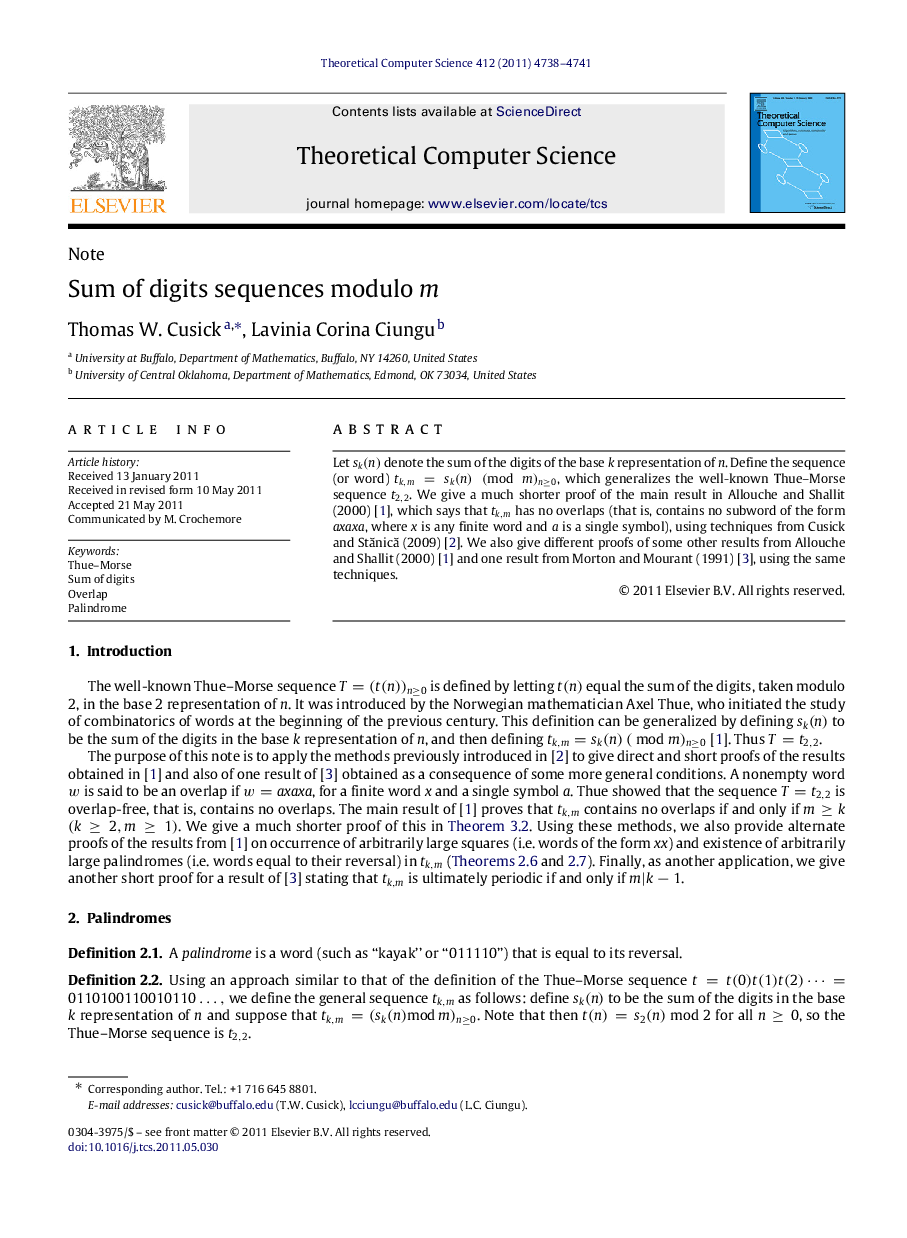| Article ID | Journal | Published Year | Pages | File Type |
|---|---|---|---|---|
| 437346 | Theoretical Computer Science | 2011 | 4 Pages |
Abstract
Let sk(n) denote the sum of the digits of the base k representation of n. Define the sequence (or word) , which generalizes the well-known Thue–Morse sequence t2,2. We give a much shorter proof of the main result in Allouche and Shallit (2000) [1], , which says that tk,m has no overlaps (that is, contains no subword of the form axaxa, where x is any finite word and a is a single symbol), using techniques from Cusick and Stănică (2009) [2], . We also give different proofs of some other results from Allouche and Shallit (2000) [1], and one result from Morton and Mourant (1991) [3], using the same techniques.
Related Topics
Physical Sciences and Engineering
Computer Science
Computational Theory and Mathematics
